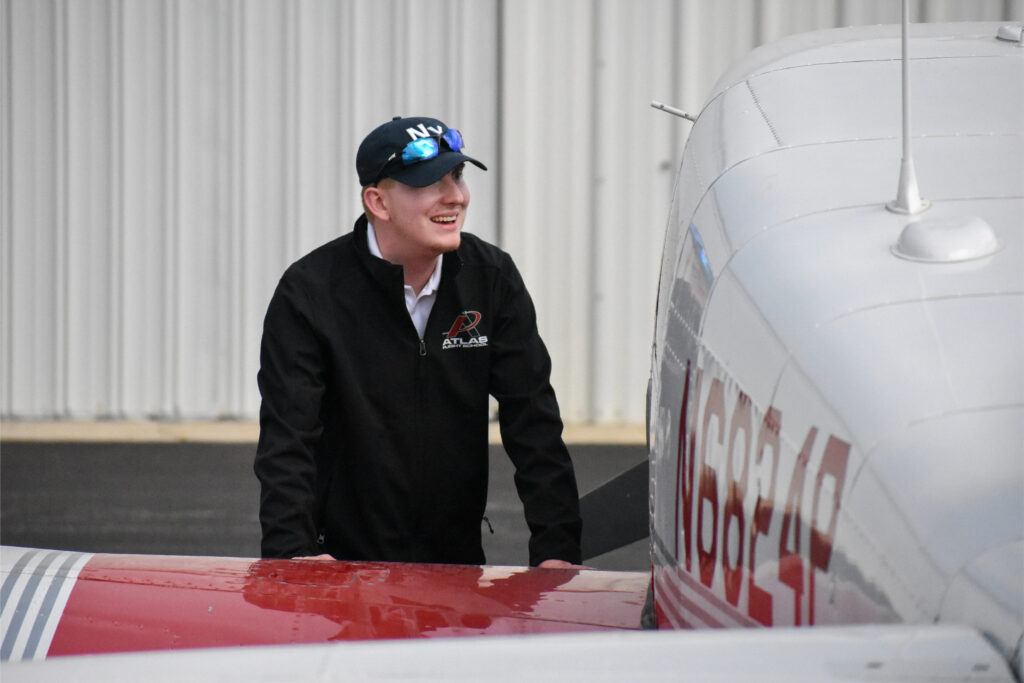
Commercial pilots oversee the smooth and safe operation of aircraft that carry passengers, cargo, or other specialized missions. Depending on their area of expertise, piloting skills, and level of training, they may also be involved in firefighting or search and rescue operations. Some fly passenger charter ops while others are responsible for crop dusting duties or conducting aerial photography, but most especially, commercial pilots work as Certified Flight Instructors.
* Does not include time building hours which do not need an instructor
** Lesson cost depends on aircraft
*Three (3) hours of flight training must be conducted within the 2 calendar months preceding the test.
In 2018, the Federal Aviation Administration (FAA) issued a new rule that no longer requires a commercial pilot applicant to have to train with older technology or rent ancient school craft that fall under the “Complex Airplane” designation (meaning the airplane has flaps, a controllable pitch propeller, and a retractable landing gear). Instead, applicants can now use modern aircraft that mirror what they will be flying professionally known as “Technically Advanced Aircraft” aka “TAA.” A TAA is an airplane featuring (1) a continuously visible electronic Primary Flight Display (PFD) that includes, at a minimum, an airspeed indicator, turn coordinator, attitude indicator, heading indicator, altimeter, and vertical speed indicator; (2) an electronic Multifunction Display (MFD) that includes, at a minimum, a moving map using Global Positioning System (GPS) navigation with the aircraft position displayed; and (3) a two-axis autopilot integrated with the navigation and heading guidance system.
Requirements:
Frequently Asked Questions
Commercial pilots oversee the smooth and safe operation of aircraft that carry passengers, cargo, or other specialized missions. Depending on their area of expertise, piloting skills, and level of training, they may also be involved in firefighting or search and rescue operations. Some fly passenger charter ops while others are responsible for crop dusting duties or conducting aerial photography, but most especially, commercial pilots work as Certified Flight Instructors.
Commercial pilots require increased skill in order to identify any potential problems with their plane, its instrumentation, or the conditions outside and relate that to the legal, safe operation of the aircraft. They must also be able to accurately land without an operating engine and do advanced flight maneuvers.
Basic Requirements to become a Commercial Pilot:
Exams Required for Certification:
Aeronautical experience requirements for commercial pilot applicants are necessary before attempting to pass the FAA check ride as a flight time requirement. Flight schools establish the aeronautical experience requirements for commercial pilot applicants with their students to participate in a training program or certificate. Commercial pilot applicants must have at least a private pilot certificate before attempting to pass the FAA check ride.
To obtain a commercial certificate in an airplane under FAR Part 61 rule, here are the requirements:
For pilots, there are industry-approved programs that are economically and time-efficient, such as the FAR Part 141 program. Pilots in these training schools can earn commercial licenses and certificates with fewer hours required.
An FAA Commercial Pilot’s license will open a lot of different career paths for you since a Commercial Pilot License is highly sought-after and recognized internationally. One skill you will learn after earning your Commercial Pilot Certificate is that it can make you more employable because there are many jobs you can get in both commercial freight and passenger aviation.
Here are the other career paths you can pursue:
A commercial pilot license (CPL) is required to become an airline pilot. Suppose you are, however, looking to become a first officer on smaller planes. In that case, some airlines provide temporary positions to people who have not yet achieved the 1,500 flight hours needed for receiving the ATPL.
To become a flight instructor, a pilot must first get a private pilot license (PPL). Once acquired, a pilot may continue training for additional certifications. The Commercial Pilot certification is a prerequisite to being a CFI-A. A CFI-S, on the other hand, does not have the same prerequisites.
Commercial pilot salaries can fluctuate wildly, depending on where and what the job is. For example, flying for a local shop could earn you as little as $15,000 per year with a pilot certificate. Still, if you were to become a co-pilot for an airline or private company with a multi million-dollar budget, you might be looking at as much as $186,000 per year with a pilot certificate.